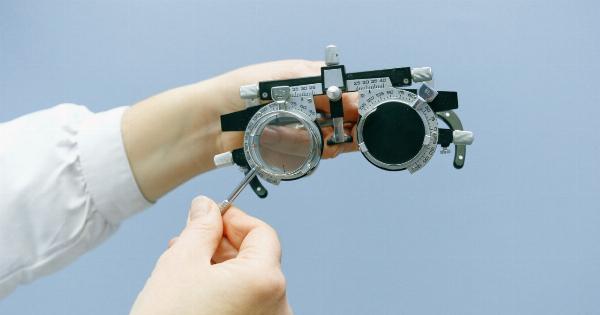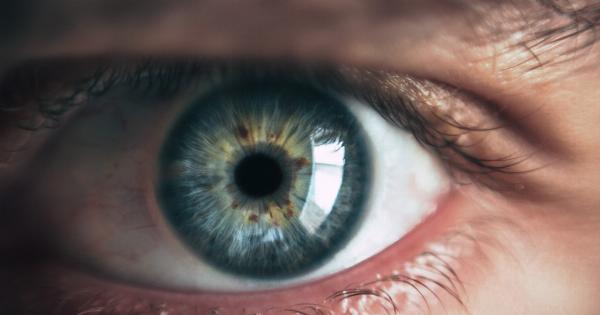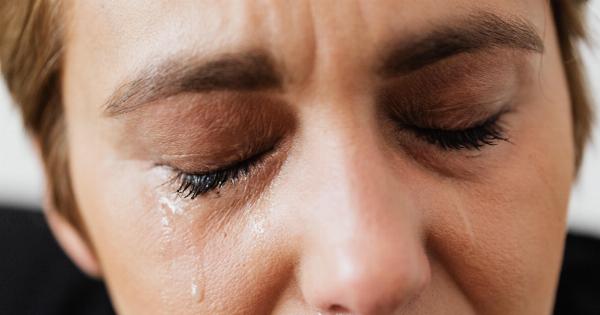Eye pressure refers to the measurement of fluid pressure inside the eye, also known as intraocular pressure (IOP). It is an essential aspect of maintaining optimal eye health.
The eye is a complex organ that relies on a delicate balance of fluid production and drainage. When this balance is disrupted, it can lead to increased eye pressure, which may have detrimental effects on vision if left untreated.
Causes of Eye Pressure
There are various factors that can contribute to an increase in eye pressure. Understanding these causes is crucial in identifying potential risk factors and adopting preventive measures. Some common causes include:.
1. Glaucoma
Glaucoma is a group of eye conditions characterized by damage to the optic nerve, often associated with elevated eye pressure. It is a leading cause of irreversible vision loss and requires ongoing management to preserve visual function.
Regular eye examinations are essential to detect and monitor glaucoma as early as possible.
2. Aging
As we age, the natural drainage system of the eye may become less efficient, leading to increased eye pressure. This can be caused by a decrease in the production of aqueous humor or a blockage in the drainage canals.
Regular eye exams are crucial, especially for individuals over the age of 40, to monitor eye pressure and detect any age-related changes.
3. Family History
There is evidence to suggest that eye pressure levels can be influenced by genetics. If you have a family history of glaucoma or elevated eye pressure, you may be at a higher risk of developing these conditions.
It is important to inform your eye care professional about any family history of eye diseases to ensure appropriate monitoring and preventive strategies.
4. Ethnicity
Research has shown that certain ethnicities, such as individuals of African or Hispanic descent, have a higher prevalence of glaucoma. These populations may also have a higher risk of developing elevated eye pressure.
It is crucial for individuals from these ethnic backgrounds to be diligent about regular eye examinations to monitor and manage their eye pressure effectively.
5. Medications
Some medications, such as corticosteroids, can increase eye pressure when used long-term or at high doses.
If you are prescribed any medications, it is important to discuss potential side effects with your healthcare provider, including their impact on eye pressure. This allows for appropriate monitoring and adjustments to minimize the risk of elevated eye pressure.
6. Eye Injuries or Surgeries
Eye injuries or previous eye surgeries can disrupt the normal drainage pathways in the eye, leading to increased eye pressure.
It is crucial to seek immediate medical attention for any eye injuries and inform your eye care professional about any past surgeries to ensure appropriate monitoring and management of your eye pressure.
7. Other Eye Conditions
Various other eye conditions can also contribute to elevated eye pressure. These include uveitis (inflammation of the uvea), iritis (inflammation of the iris), and eye tumors.
Managing these underlying conditions under the guidance of an eye care professional is essential to prevent complications related to elevated eye pressure.
Understanding the Ideal Ranges for Optimal Eye Health
While it is important to note that ideal eye pressure ranges can vary between individuals, the normal range is typically between 12 and 22 millimeters of mercury (mmHg).
Eye pressure is measured using a tonometer, a device that assesses the resistance of the cornea to determine intraocular pressure.
Regular eye exams are crucial to determine your baseline eye pressure and detect any changes over time.
An eye care professional will evaluate your eye pressure and take into consideration various factors such as age, family history, and overall eye health.
In some cases, an individual’s ideal eye pressure range may be lower or higher than the average range. Factors such as the presence of glaucoma or specific eye conditions can influence the target range for optimal eye health.
The Importance of Maintaining Optimal Eye Pressure
Maintaining optimal eye pressure is vital for preserving good vision and preventing eye diseases like glaucoma. When eye pressure is too high, it can cause damage to the optic nerve, leading to irreversible vision loss over time.
Conversely, if eye pressure is too low, it can also cause vision problems and potential complications.
An eye care professional plays a crucial role in monitoring and managing eye pressure. Regular eye examinations allow for early detection of any changes in eye pressure and prompt intervention if necessary.
By maintaining optimal eye pressure, individuals can significantly reduce their risk of developing vision-threatening conditions.
Preventing and Managing Increased Eye Pressure
While some factors that contribute to increased eye pressure may be beyond an individual’s control, there are strategies and lifestyle practices that can help prevent or manage elevated eye pressure:.
1. Regular Eye Exams
Scheduling routine eye exams with an eye care professional is essential for monitoring eye pressure and assessing overall eye health. Depending on your specific risk factors, your eye care professional will determine the frequency of these exams.
2. Managing Underlying Conditions
For individuals with pre-existing eye conditions or systemic diseases that may impact eye health, it is crucial to work closely with healthcare professionals to manage these conditions effectively.
This may involve medications, lifestyle modifications, or surgical interventions as deemed necessary by your healthcare team.
3. Healthy Lifestyle Choices
Adopting a healthy lifestyle can help promote optimal eye health. This includes consuming a nutritious diet rich in antioxidants, maintaining a healthy weight, quitting smoking if applicable, and engaging in regular exercise.
These lifestyle choices contribute to overall well-being, which can also positively impact eye health.
4. Eye Protection
Protecting your eyes from injury is essential. When engaging in activities that pose a risk of eye injury, such as sports or certain occupations, wearing appropriate protective eyewear can help prevent eye trauma and potential complications.
5. Stress Management
Chronic stress can take a toll on overall health, including eye health. Finding healthy ways to manage stress, such as practicing relaxation techniques or engaging in hobbies and activities you enjoy, can contribute to maintaining optimal eye pressure.
By implementing these preventive measures and making conscious choices to prioritize eye health, individuals can significantly reduce their risk of developing complications related to elevated eye pressure.




























